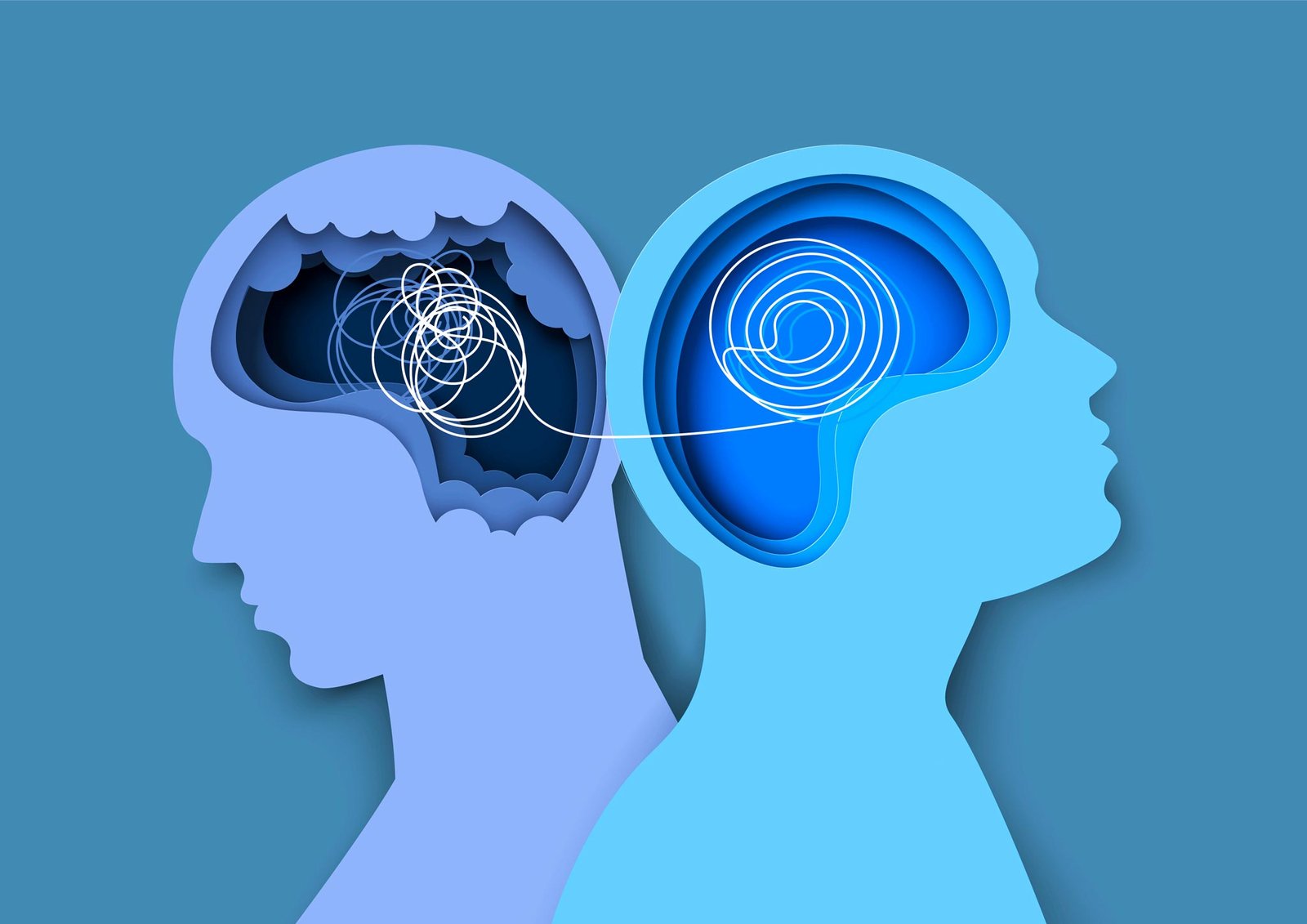Health & Fitness
How Addiction Affects Families and How to Begin the Healing Process

Addiction is often described as a family disease, affecting not just the individual struggling with substance use but also their loved ones. The impact of addiction can ripple through relationships, creating emotional turmoil, financial strain, and communication breakdowns. Understanding how addiction affects families and recognizing the steps toward healing can facilitate recovery for everyone involved.
How Addiction Affects Families
- Emotional Distress
Family members of individuals struggling with addiction often experience a wide range of emotions, including fear, anger, guilt, shame, and confusion. They may feel helpless as they witness their loved one’s downward spiral. This emotional distress can lead to anxiety and depression among family members, impacting their overall well-being. - Communication Breakdown
Addiction can severely impair communication within families. Secrets, lies, and denial often become prevalent as individuals try to protect their loved ones or hide the reality of the situation. This lack of honest communication can create distance and misunderstandings, leading to further conflict and resentment. - Financial Strain
Substance abuse can lead to significant financial problems for families. Money that could have been used for essential needs may instead be spent on drugs or alcohol. Additionally, the cost of treatment, legal issues, or healthcare due to addiction-related consequences can strain family finances. - Impact on Children
Children in families affected by addiction often bear the brunt of the emotional and psychological fallout. They may experience neglect, instability, or a lack of supervision, which can affect their development and mental health. Many children may grow up with feelings of insecurity or may even struggle with addiction themselves later in life.
How to Begin the Healing Process
- Educate Yourself About Addiction
Understanding the nature of addiction is the first step toward healing. Educate yourself about the disease of addiction, its effects, and the recovery process. Knowledge can empower families to respond with empathy and support rather than frustration and judgment. - Seek Professional Help
Therapy can be invaluable for families dealing with addiction. Family counseling can help members express their feelings, improve communication, and rebuild trust. Individual therapy can also assist family members in processing their emotions and developing healthier coping strategies. - Attend Support Groups
Support groups like Al-Anon or Nar-Anon provide a safe space for family members to share their experiences and learn from others facing similar challenges. Connecting with others who understand your situation can reduce feelings of isolation and provide practical tools for coping. - Establish Healthy Boundaries
Setting boundaries is crucial in the healing process. Family members must learn to protect their well-being by establishing what behaviors are acceptable and what consequences will occur if those boundaries are crossed. This may involve stepping back from enabling behaviors and prioritizing self-care.
Conclusion
Addiction affects not only the individual but also their entire family. By recognizing the impact of addiction and taking proactive steps toward healing, families can rebuild relationships, improve communication, and foster a supportive environment for recovery. If you or someone you know is struggling with addiction, reach out to Addiction Ends Now at 844-660-0333 for immediate support and guidance on the path to recovery. Together, healing is possible.
Health & Fitness
The Benefits of Ketamine Therapy for Mental Health

Ketamine therapy is increasingly gaining attention as an innovative option in mental health care. Originally known as an anesthetic, ketamine has shifted into broader applications, particularly in addressing various mental health conditions. Administered under medical supervision, it offers a promising approach for individuals who may not have found relief through traditional treatments.
An Overview of Ketamine Therapy
Ketamine therapy uses ketamine, either through IV infusions or a nasal spray, to treat mental health symptoms. Unlike traditional treatments, which take weeks, this approach often provides faster relief. Initially developed for other purposes, it was later found to impact mood-regulating brain functions. Targeting the brain’s glutamine system it enhances neural connections and supports processes linked to mood stabilization.
Conditions That May Benefit from Ketamine Therapy
Ketamine therapy is gaining attention as a potential treatment for various mental health conditions. It is often recommended for individuals with treatment-resistant depression. That said, its uses go beyond this specific condition.
- Symptoms such as overwhelming sadness, hopelessness, or excessive worry can significantly impact daily life. For some patients, alternative therapies offer rapid relief, particularly when other treatments have fallen short.
- Post-Traumatic Stress Disorder (PTSD): PTSD often results from exposure to traumatic events, leading to flashbacks, heightened anxiety, or emotional numbness. Certain therapies have shown promise in reducing these symptoms for some individuals.
- Bipolar Disorder: Managing bipolar disorder traditionally requires a combination of medication and therapy. Alternative approaches may serve as a complementary option, particularly during depressive episodes.
- Suicidal Thoughts: One of the most well-documented uses for some therapies is their ability to reduce suicidal ideation in certain patients. Their rapid action makes them a unique tool compared to traditional antidepressants.
Difference Between Ketamine Therapy and Traditional Treatments
Most traditional mental health treatments, like antidepressants or talk therapy, can take weeks or months to show results. Therapy often provides quicker relief, sometimes within hours or days. Ketamine works like a “reset button” for the brain’s neural pathways. Unlike treatments that only adjust neurotransmitter levels like serotonin or dopamine, it targets the brain’s glutamine system, directly affecting mood regulation. This therapy is highly personalized, with each treatment tailored to the patient’s medical history, symptoms, and response.
Long-Term Impacts of Ketamine Therapy
While ketamine therapy is not a cure for mental health disorders, its long-term potential lies in symptom management and improved quality of life. Some patients report sustained benefits after several treatment sessions, while others combine ketamine therapy with ongoing mental health care for optimal results. By alleviating acute symptoms, the therapy can allow patients to engage more effectively with additional treatments, such as psychotherapy or medications.
Safety Measures for Administration
The administration of ketamine therapy requires a controlled and professional environment. Treatments are typically conducted in medical clinics so that healthcare providers can monitor patients closely. Before beginning a session, a thorough psychiatric evaluation helps determine the therapy’s suitability for each individual. During treatment, patients are monitored for side effects like drowsiness or mild dissociation. This attentive care minimizes risks and allows adjustments based on patient reactions.
Exploring the Potential of Ketamine Therapy
Ketamine therapy represents a significant development in mental health treatments for conditions like depression, anxiety, PTSD, and bipolar disorder. Its potential for rapid symptom relief, paired with its ability to reduce suicidal thoughts, sets it apart from traditional approaches. When administered under proper medical guidance, ketamine therapy provides a safe and tailored option for those seeking to improve their mental well-being. To learn more about how this therapy could help, consult a qualified medical provider today.
Health & Fitness
How to Overcome Social Anxiety with Professional Therapy

Social anxiety can feel overwhelming and isolating, affecting both personal and professional aspects of life. It creates a sense of fear or unease in social situations, causing people to avoid meetings, gatherings, or even everyday interactions. A social anxiety therapist can offer many individuals a way to tackle and manage the challenges associated with social anxiety.
What Causes Anxiety?
Anxiety is a response to perceived threats or pressure. While it is a natural part of human functioning that helps individuals identify concerns in their surroundings, it can become problematic when it interferes with daily life. Factors contributing to anxiety may include:
- Genetics: A family history of anxiety disorders could predispose an individual to similar challenges.
- Environmental Influences: Stressful events, childhood trauma, or sustained high-pressure environments can heighten anxiety levels.
- Biological Factors: Imbalances in brain chemicals such as serotonin and dopamine may play a role.
- Cognitive Patterns: Negative thought processes or excessive worry about the future can exacerbate feelings of anxiety.
What is Social Anxiety?
Social anxiety, also referred to as social anxiety disorder, is a condition characterized by a debilitating fear of social situations. It extends beyond occasional nervousness, persisting in ways that significantly limit a person’s ability to connect or communicate with others. Individuals with social anxiety often have concerns about judgment, embarrassment, or rejection. Symptoms may include:
- Intense avoidance of social gatherings
- Sweating, trembling, and other physical reactions in social settings
- Difficulty speaking or maintaining eye contact
- Persistent negative self-talk centered on social interactions
How Can a Social Anxiety Therapist Help?
Therapy serves as a targeted approach to tackling the thought patterns and behaviors that fuel social anxiety. Various therapeutic methods provide individuals with the tools to better manage their symptoms and collaborate in improving their quality of life, some of which include:
Cognitive Behavioral Therapy (CBT)
CBT is commonly used to address social anxiety. It focuses on challenging negative beliefs and replacing them with constructive thinking patterns. If an individual often believes they will embarrass themselves while speaking up in a group, CBT encourages them to dissect and reframe that belief.
Supportive Counseling
For those more comfortable with open-ended discussion, supportive counseling fosters a safe and nonjudgmental environment. A social anxiety therapist can guide clients to explore the underlying causes of their anxiety. They offer tools and coping mechanisms to respond to social challenges more effectively.
Individualized Approaches
Some professionals combine multiple techniques to tailor their methods based on a person’s unique needs. Whether this means integrating mindfulness or focusing on specific life scenarios, customized approaches often yield effective results. Therapy benefits individuals navigating social anxiety by providing structured strategies to understand and manage their symptoms.
Picking the Right Therapist
Finding the right therapist is a collaborative process. A supportive professional can guide you through understanding your challenges and selecting an appropriate treatment plan. Begin by identifying professionals experienced in treating social anxiety or anxiety disorders. Look for licensed therapists, psychologists, or counselors who specialize in CBT, mindfulness-based treatments, group therapy, or another effective form of therapy.
During your initial sessions, ask about their experience with cases similar to yours and share your goals for therapy. Professional therapy is an effective avenue to address social anxiety. By working through thought patterns and behaviors, individuals can regain stability and participate more fully in their lives.
Health & Fitness
The Latest Advances in Neurology for Treating Neurological Diseases

Neurology is evolving rapidly, bringing new methods and tools to address neurological diseases. These innovations aim to improve diagnostic accuracy, enhance patient care, and explore promising treatment approaches. The field continues to pave the way for better outcomes by focusing on advanced technologies and therapies. Below is information on some of the latest advances in neurological care.
Transforming NeurologyThrough Innovation
Modern neurology increasingly relies on cutting-edge technologies to address challenges in treating neurological conditions. These tools enable researchers and practitioners to expand their understanding of complex conditions that impact millions of people worldwide. Innovations are not only refining existing practices but also opening doors to new possibilities in patient care.
The shift towards tech-driven solutions has introduced more efficient and innovative methods for treating diseases like multiple sclerosis, Alzheimer’s, and epilepsy. By leveraging advancements in technology such as AI-driven diagnostics, personalized medicine, and wearable health devices, healthcare providers can now enhance the precision and effectiveness of treatments. While the focus remains on improving current therapies to manage symptoms and slow disease progression better, researchers are optimistic that these new approaches could eventually transform the way patients experience and manage their conditions, offering improved quality of life and potentially new pathways for long-term care.
Advancements in Brain Imaging and Diagnostics
Advances in brain imaging have significantly improved the ability to detect and monitor neurological disorders. Tools such as functional MRI (fMRI) and advanced PET scans allow specialists to observe intricate brain activity and structure details. This enhances accuracy during the early stages of diagnosis, which often directly influences treatment effectiveness.
Emerging technologies, such as machine learning algorithms in diagnostics, assist physicians in interpreting imaging results with greater precision. These systems analyze large datasets and identify patterns that may not be immediately apparent. The tools are transforming how doctors analyze and predict disease progression, helping with individualized treatment plans.
The Rise of Neurostimulation Therapies
Neurostimulation therapies have advanced significantly in recent years. Techniques like transcranial magnetic stimulation (TMS) and deep brain stimulation (DBS) are being used to treat various conditions, including Parkinson’s disease, depression, and chronic pain. These treatments modify neural activity by targeting specific areas of the brain with electrical or magnetic stimulation. Ongoing research is exploring non-invasive neurostimulation methods, offering promising options for patients seeking less intensive interventions. The adaptability of these approaches allows researchers to explore tailored treatments, reducing side effects and improving patient experiences overall.
Future Directions in Neurological Care
Neurology is set to benefit further from developments in artificial intelligence (AI), personalized medicine, and robotics. These areas hold significant potential to refine how neurological diseases are managed. Personalized therapies, informed by genetic and molecular insights, could lead to tailored interventions that better address individual patient needs.
Collaboration between researchers and healthcare providers will remain invaluable as breakthroughs continue. By integrating expertise and knowledge across disciplines, the field is likely to see even greater advancements in prevention, diagnostics, and treatment strategies. The future of neurological care is poised to bring new possibilities for patients worldwide. Schedule a consultation with a neurologist today to learn more.
-

 Technology5 months ago
Technology5 months agointernet chicks: A Digital Phenomenon
-

 Recipes6 months ago
Recipes6 months agoCrab Brulee Recipe: A Gourmet Delight
-

 Recipes7 months ago
Recipes7 months agoSmoothie CCL: A Delicious and Nutritious Trend
-

 FOOD7 months ago
FOOD7 months agoÇeciir: A Journey Through Turkish Cuisine
-

 FOOD7 months ago
FOOD7 months agoCornflake Meringue Cookies
-

 FOOD7 months ago
FOOD7 months agoNasi Uduk
-

 Recipes6 months ago
Recipes6 months agoThe Ultimate Bug Juice Camp Drink Recipe for Fun and Flavor
-

 BLOGS7 months ago
BLOGS7 months agoUnveiling the Innovation: BoltBól – Revolutionizing Accessibility and Mobility
